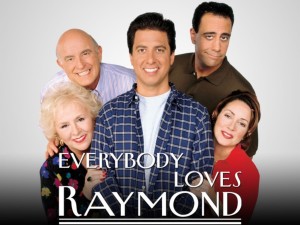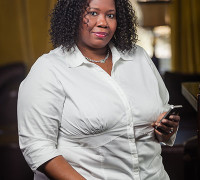How is your relationship Closeness & Flexibility?

How is your relationship Closeness & Flexibility?
A common problem for couples coming for counseling is that they disagree on how much closeness or flexibility they want in their relationship. For example one person might want to spend more time together while the other person wants more freedom and autonomy. Couples might also differ on how organized they should be, as one person prefers an unscheduled weekend while the other likes to have activities organized and planned.
Another issue for couples is that they are stuck on the unbalanced extremities of closeness and flexibility. A common complaint of couple seeking counseling is that there is too little closeness (i.e., too much separateness) between them because they have drifted apart as they are each more involved in work or activities away from the partner. Another common complaint is that they partner is too rigid it is not open to change (i.e., inflexible).
An important step in creating a relationship that will work for you both east to take the prepare enrich relationship assessment and discover how you will each perceive your relationship. One common finding is that partners see their relationship someone differently in terms of closeness and flexibility. One must consider how much closeness and flexibility you would each like to have in your relationship. By comparing where you are now, to where you would like to be, you can begin to set goals to change a relationship and explore how you might achieve these goals together.
NOTE: Prepare enrich assessments are available through most churches, and also tailored assessments for Jewish faith and many others. If you are non-religious, then see a certified PE Coach or Counselor.
 In the couple map you will find five levels of closeness and the five levels of flexibility combined. Together they create 25 different types of couple relationships. These 25 types can be broken down into three more general patterns, (balanced, mid range, and unbalanced).
In the couple map you will find five levels of closeness and the five levels of flexibility combined. Together they create 25 different types of couple relationships. These 25 types can be broken down into three more general patterns, (balanced, mid range, and unbalanced).
The nine central cells, (lightly shaded), are called balanced because they have the three central levels of both closeness and flexibility. Couples in a balanced relationship are typically the most happy.
There are 12 midrange types, medium shaded cells, which occur when a couple is balanced in one area and unbalanced in the other. These couples can be happy and doing well, but they often have more difficulty when they encountered stress in their lives.
There are four unbalanced types, (darkest shade cells), these represent a couple of the extremes of both close this inflexibility. Couples who are unbalanced typically I’m not very happy with the relationship and the most likely to seek counseling for their marriage. A more balanced approach to closeness and flexibility is based for relationships as they grow and change over time.
TV’s #1 Unbalanced Family
Movies and television shows often betray unbalance couples and families because they are more dramatic, interesting, and sometimes comical. Let’s look at the popular USA series “Everyone Loves Raymond.”
Everyone loves Raymond – represents an unbalanced family that is overly connected and inflexible, ( lower right corner of the map).
Ray is a successful sports writer living on long island with his wife Deborah, and they have three children. Ray’s parents live directly across the street and it enables them to continuously intrude on them as a couple. Ray’s brother Robert is a divorced cop, and he often visits also. Ray’s mother Marie is the matriarch of the family and is in everyone’s business, continually trying to control everyone else. Debra hopelessly tries to find some space and autonomy from Ray’s parents but is usually unsuccessful.
The entire family assistant is rigid and has difficulty trying to change or make improvements.
Can we change our map?
Couple and family relationships change over time, and the couple and family map is a useful way to illustrate these changes. Relationships change in their levels of closeness and flexibility to better adapt to the issues that occur over time.
As an infidelity recovery specialist, I highly recommend the modern couple assess their relationship annually. This will ensure you both understand each others changing needs.
Couple Discussion Questions
- Do this quiz yourself two times. First time, how is your current closeness & flexibility. Then, think about how you would like it to be
- Ask your partner to do it.
- Discuss the answers with an open heart, and a willingness to adapt.
Couple closeness
How often do you spend free time together?
- Never
- Seldom
- Sometimes
- Often
- Very often
How committed are you to your partner?
- Slightly
- Somewhat
- Generally
- Very
- Extremely
How close do you feel to your partner?
- Not very close
- Somewhat close
- Generally close
- Very close
- Extremely close
How do you and your partner balance separateness and togetherness
- Mainly separateness
- More separateness than togetherness
- Equally
- More togetherness and separateness
- Mainly togetherness
How independent or dependent on each other are you and your partner?
- Very independent
- More independent and dependent
- Equally dependent and independent
- More dependent than independent
- Very dependent
Couple flexibility
What kind of leadership is their in your couple relationship
- One person usually leads
- Leadership is sometimes shared
- Leadership is generally shared
- Leadership is usually shared
- Leadership is unclear
How often do you and your partner into the same responsibilities around the house?
- Almost always
- Usually
- Often
- Sometimes
- Seldom
What are the rules, written or unwritten, in your relationship
- Rules of very unclear and very stable
- Rules are clear and generally stable
- Rules of the clear and structured
- Rules are clear and flexible
- Rules are unclear and changing
How are decisions made?
- One person usually decide
- Decisions are sometime shade
- Decisions are often shared
- Decisions are usually shared
- Decisions are rarely made
How much change occurs in your couple relationship?
- Very little change
- Little change
- Some change
- Considerable change
- A great deal of change
DBA, MBA, BBSc, MPsych (Clin)
To begin Premartial Counseling or Post Marriage Coaching with Dr. Savannah Ellis, CLICK HERE.
Gift certificates available.
Reference:
The Couple Checkup: Find Your Relationship Strengths is designed to help you and your partner build a more satisfying and intimate relationship. This is not so much a book to read but a checklist of things to do, questions to answer, answers to discuss and conversations to share.
Written by three relationship experts, this book will stimulate thoughts and attitudes about your relationship, help you activate dialogue and discovery, and deepen the quality of your relationship.
Available now on Amazon.
The Couple Checkup: Find Your Relationship Strengths
Random Posts
Loading…















